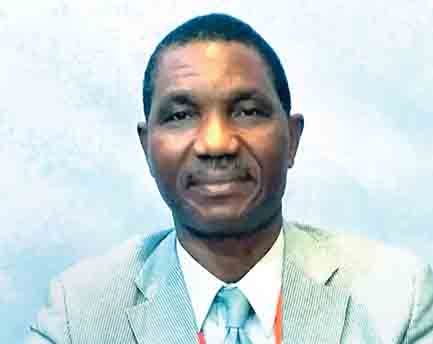Successful management and role of effective communication

Olufemi Adedamola Oyedele, MPhil. in Construction Management, managing director/CEO, Fame Oyster & Co. Nigeria, is an expert in real estate investment, a registered estate surveyor and valuer, and an experienced construction project manager. He can be reached on +2348137564200 (text only) or femoyede@gmail.com
July 31, 2023736 views0 comments
Communication is simply the act of transferring information from one place, person or group to another. Every communication involves (at least) a sender, a message and a receiver. It can be oral, written, body language or signs. Communication is usually a complex exercise because it involves different people with probably different levels of understanding due to levels of education, cultural background and mood. The transmission of the message from sender to recipient can be affected by a huge range of things (barriers). These include emotions, the cultural situation, number and complexity of messages, the medium used to communicate, and even the location where the transmitter or receiver are. The complexity is why good communication skills are considered so desirable by corporate organisations globally. Accurate, effective and unambiguous communication is actually extremely hard.
The different means of communication are: spoken or verbal communication: which includes face-to-face, telephone, radio or television, speakers and other media. Non-verbal communication: covering body language, signs, gestures, how we dress or act, where we stand, how we smile or frown our faces, and even the way we walk. There are many restrained ways that we communicate (perhaps even unintentionally) with others. For example, the tone of our voice can give clues to our mood or emotional state, whilst hand signals or gestures can add strength to a spoken message.
Written communication: This includes letters, e-mails, social media, books, magazines, the Internet and other media. Until recent times, a relatively small number of writers and publishers were very powerful when it came to communicating the written word.
Modern communication methods in the corporate world include: Short Message Service (SMS), e-mail, notice board, newsletter, memo, newspaper, correspondence, social media like Facebook, TikTok, Twitter, WhatsApp, Zoom, LinkedIn, web page, Blog etc. The use of technology has made easy, but not effective, communication possible among stakeholders. Effective communication depends on planning how to communicate, assessing the level of education, age, sex, the religion and culture of the recipients, the effective method of communication to engage and the message to send. The management of FrieslandCampina WAMCO Nigeria Plc, makers of Peak Milk, had to apologise to the Christian Association of Nigeria (CAN) over a controversial Good Friday advert described as “insensitive” and “offensive” by the apex Christian association.
On that Good Friday, 7th April, 2023, the company published an Easter message with a dented Peak Milk tin pierced on two sides with a nail to its head to depict the crucifixion of Jesus Christ, the Lord and saviour of Christians. CAN saw the advert as offensive, denigrating and insensitive to the mood of its members and therefore, threatened that all its members will be asked to boycott the products of the company. In McDonald’s Corporation vs Steel and Morris (1997) EWHC 366 (QB), also known as “McLibel case”, an English lawsuit for libel filed by McDonald’s against environmental activists Helen Steel and David Morris over unsubstantiated fact sheet against the operation of McDonald’s and critical to its survival. This case that lasted for ten years did more damage than good to McDonald’s image because it became a media circus which affected McDonald’s sales, caused by “Streisand effect” and McDonald gained nothing against the duo. At times, non-communication is a good communication strategy.
Today, we can all write and publish our ideas online (social media), which has led to an explosion of information and communication potentials.
Visuals: graphs, charts, maps, logos, art works, billboards and other visualisations can all communicate messages to the public. In “How to Win Friends and Influence People’’ Dale Carnegie stated that 90 percent of all management problems are caused by miscommunication. Management always looks for ways to avoid miscommunication and get the work done. The best way is to have a staff in charge of this very important function. Shiv Khena said: “Avoid miscommunication, the price you pay for it is horrendous”. Lack of communication, poor communication and miscommunication are three costly exercises in the corporate world. Effective communication is important to help management foster good relationships with members of staff, customers and other stakeholders.
The goal of effective communication is to ensure the giver and receivers are on the same page. Feedback may be required to ensure there is total understanding of the message. Poor communication can ruin relationships and potentially result in lost sales and damaged reputation. The importance of communication in business includes: to achieve business goals, to build relationships, confidence and trust, to enhance productivity, to build credibility, in managing conflicts and avoiding misunderstanding. Good communication can make the difference between confident, motivated employees and an unproductive team with low morale. It can build thriving relationships and give workers the information they need to contribute their quotas to the success of a business. All corporate organisations must ensure they have good communication style, culture and experts to guide their relationship with the public and to lead them in this dynamic and ever-changing communication world.
